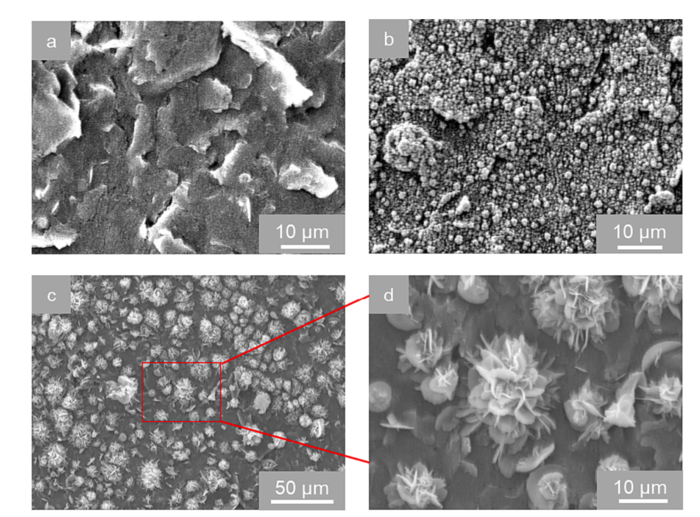Facile fabrication of HRP-Cu3(PO4)2 hybrid nanoflowers on screen-printed
electrode for electrochemical detection of H2O2
Abstract:H2O2 sensor is widelyused in biomedicine, environmental governance and food processing. However, itis limited by the complex preparation processes and high cost of raw materials.In this work, we develop a facile, simple and cost-effective method to fabricateH2O2 sensor based on a screen-printed electrode viain-situ growth method. The copper was first electrodeposited on the workingelectrode of screen-printed electrode (SPE) as a sacrificial layer,subsequently, the SPE was immersed in horseradish peroxidase (HRP) containingphosphate buffer saline (PBS). The Cu ions formed by oxidation of the copperlayer combined with HRP and phosphate ions to construct HRP-Cu3(PO4)2hybrid nanoflowers on its surface. The fabrication process is straightforward,without complex reaction conditions and dangerous drugs, which is conducive tomass production. This sensor showed a good linear response to H2O2with a detection limit of 1.8 μM and a sensitivity of 263.3 μA•mM−1•cm−2. Additionally, it possessedexcellent selectivity and long-time stability. The performance of this sensorwas investigated in various beverages such as milk, beer, and juice, showingreliable detection of H2O2 which highlights the potentialpractical applications of the sensor.

Mengying Luo, Yinnan Song, Niaz Ali Khan,Wanru Wei, Ying Lu, Qinghua Zhao, Haiqing Jiang, Mufang Li, Dong Wang,Facilefabrication of HRP-Cu3(PO4)2 hybrid nanoflowers on screen-printed electrode forelectrochemical detection of H2O2,Microchemical Journal,Volume 197,2024,109845,ISSN0026-265X, https://doi.org/10.1016/j.microc. 2023.109845.